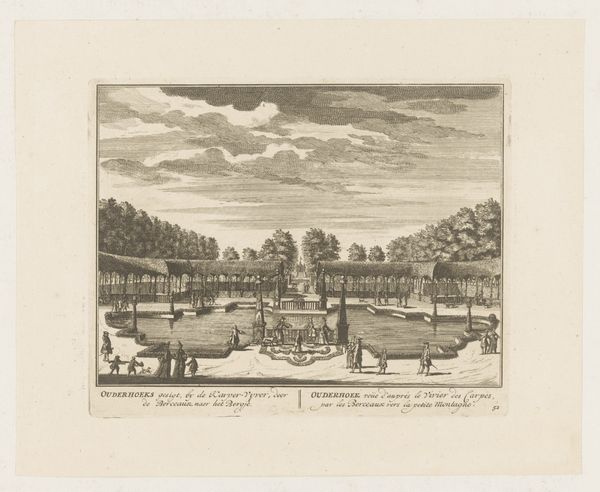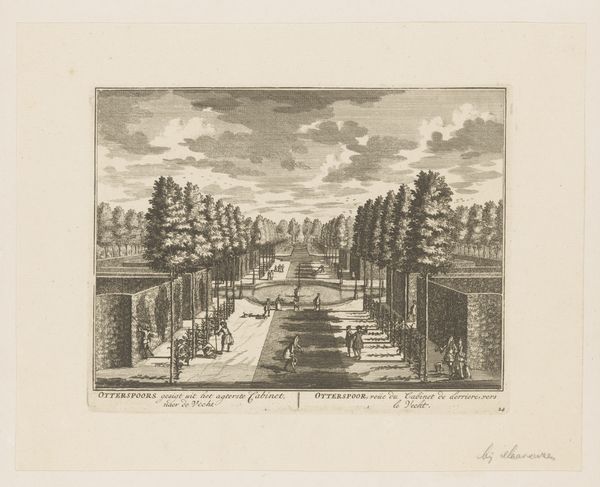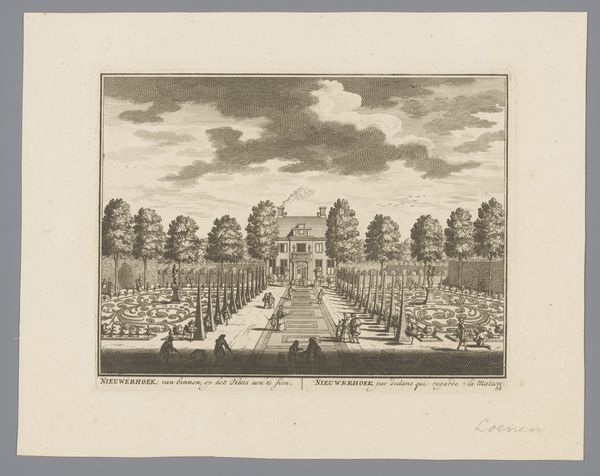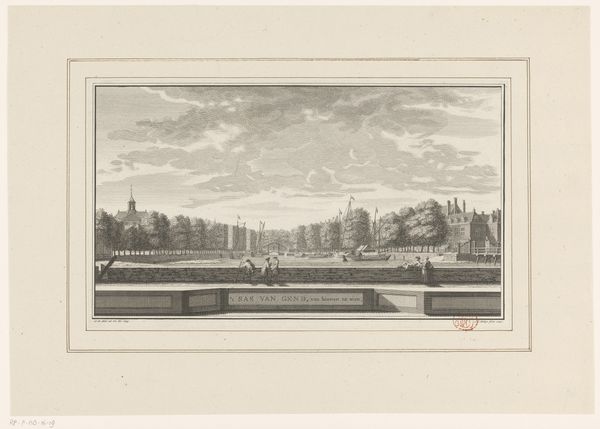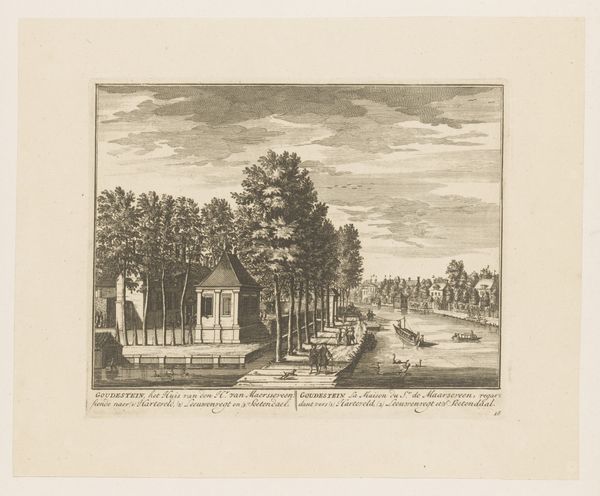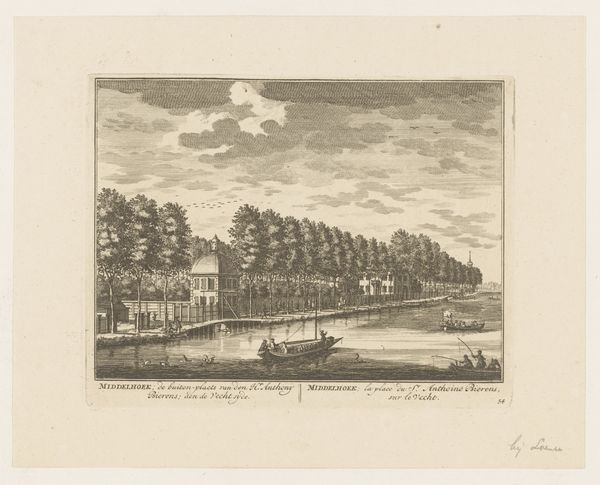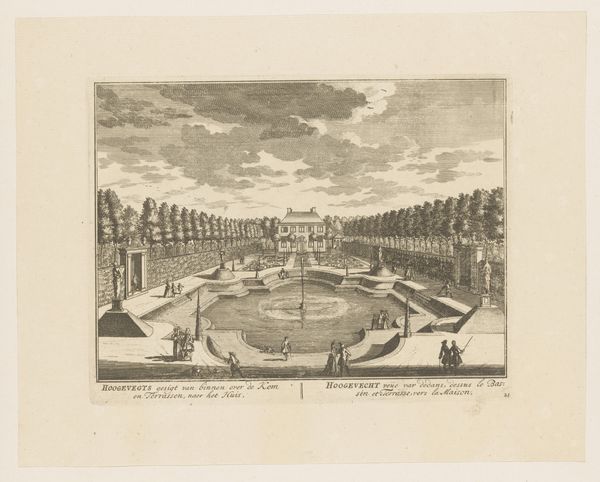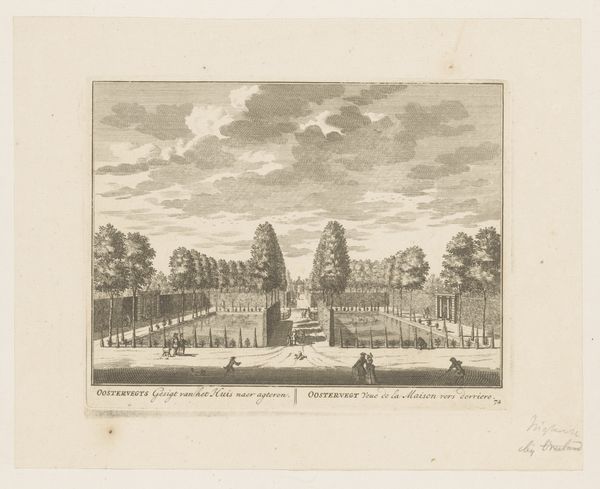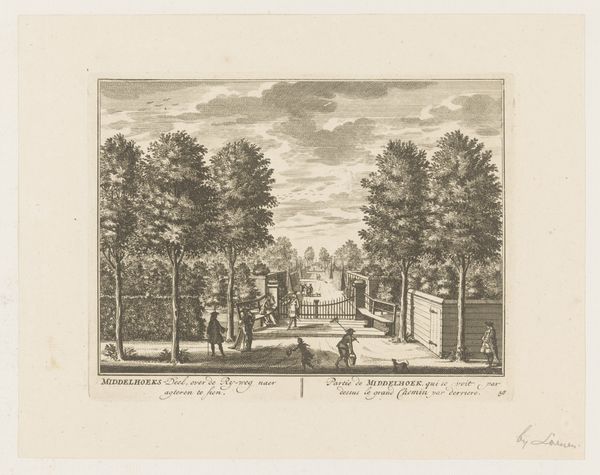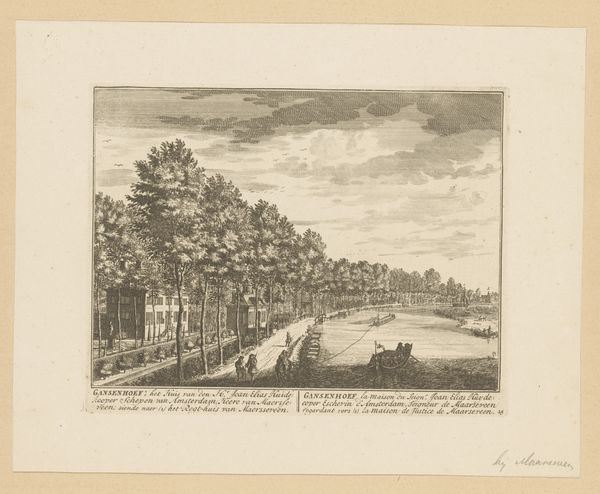
Gezicht op de tuin van buitenplaats Otterspoor aan de Vecht bij Maarssen 1719
0:00
0:00
danielstopendaal
Rijksmuseum
print, etching, engraving
#
baroque
# print
#
etching
#
old engraving style
#
landscape
#
etching
#
genre-painting
#
engraving
Dimensions: height 158 mm, width 204 mm
Copyright: Rijks Museum: Open Domain
Editor: This is Daniël Stopendaal's "View of the Garden of Otterspoor Estate on the Vecht near Maarssen," an etching and engraving from 1719. The scene feels so carefully constructed, almost theatrical. All those figures lining the garden, watching… What strikes you about the symbolism here? Curator: It is indeed theatrical, and the figures play a vital role. Consider the garden itself – a carefully controlled landscape, a stage upon which nature is made to perform. The long reflecting pool acts almost as a mirror to power, and prestige. Stopendaal, in his own way, communicates the symbolic importance of symmetry, order, and human control over nature in the 18th Century. Editor: Control, definitely. The parallel lines of trees, the squared-off pool… So, is this about visual messaging? Curator: Exactly. Think of the rising merchant class mirroring aristocratic symbolism, wanting to be perceived through a similar lens. These visual cues trigger associations and expectations – wealth, taste, authority. It’s cultural memory inscribed in landscape. What about the ducks floating along the river? How do you feel that these figures shape our idea of what it might mean to enjoy the riverbank? Editor: The ducks provide a kind of innocent counterpoint to the formal garden, almost subversive. Curator: An interesting contrast, isn't it? This tension – order versus nature, control versus freedom – is where so much meaning resides. By documenting this curated scene, what stories is the print passing on? How does this piece serve as a mirror to the social structures and ambitions of its time? Editor: I hadn’t thought of it as a document shaping cultural memory before. Now, I see so much more! Curator: Exactly. Prints allow stories to be spread, memories shared, and a cultural significance to be enjoyed and even reshaped by others. It’s fascinating!
Comments
No comments
Be the first to comment and join the conversation on the ultimate creative platform.
